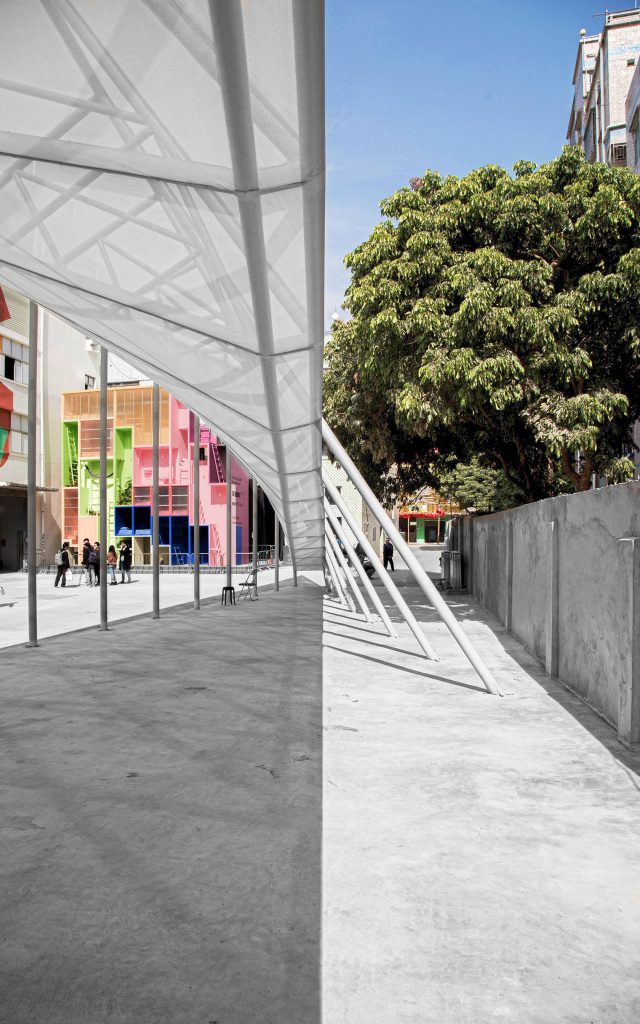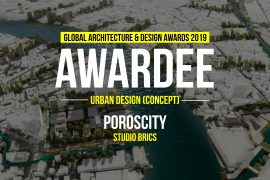The Urban Villages of Shenzhen comprise of a series of historic cores whose presence today is precarious at best. Surrounded by the rapid expansion of the contemporary city, the dense urban fabric of these communities serves as a reminder of a past that is not so distant as it is fundamentally out of scale with the emerging urban forces.

We imagined an installation on the plaza to become part of the local fabric, to serve as a civic structure, and to become conversant with the community it serves for a long time to come within the constraints of the construction budget. We proposed a linear organization, broadly informed by typologies whose figural demeanor have the power to activate an edge condition of some length.

The structure is clothed in a perforated skin, whose figure is torqued in relation to the very skeleton that gives shape to its body. Meeting the ground on the northern end as a support, the volume of the figure reduces in girth at every bay, eventually compacting itself to a thin canopy towards the south which is supported by an existing building. The piece oscillates in shape, function, and in urban position, allowing its hybrid behavior. At once compositionally legible through the regimented syncopation of its structure as an urban colonnade, and at the same time the shrink-wrapping of its structure is legible as a colossal figure in the urban landscape, something that gives monumental presence to an urban void.

The new structure gives a face to the urban room—a space that has for decades served as a residue for parking and detritus—and for the first time in history, also offers protection from the dynamic environment, a place of respite and leisure for the very community it serves, and a figure that occupies the collective imagination.
Next Post
Key to Style | Nendo
2 Mins Read





